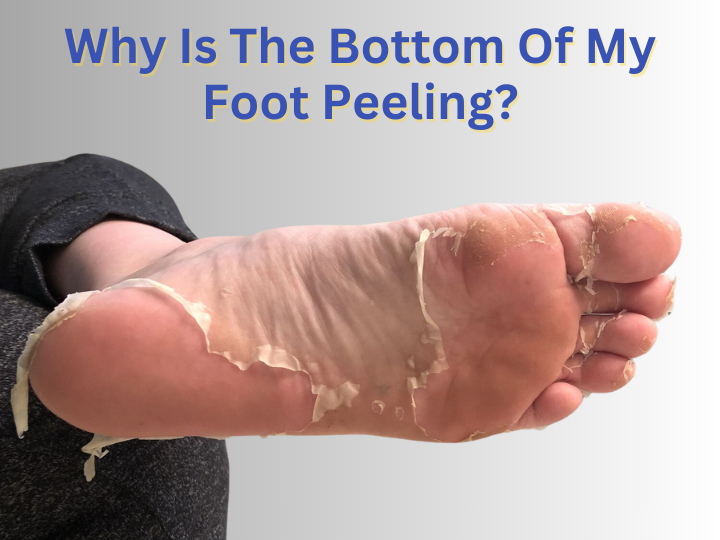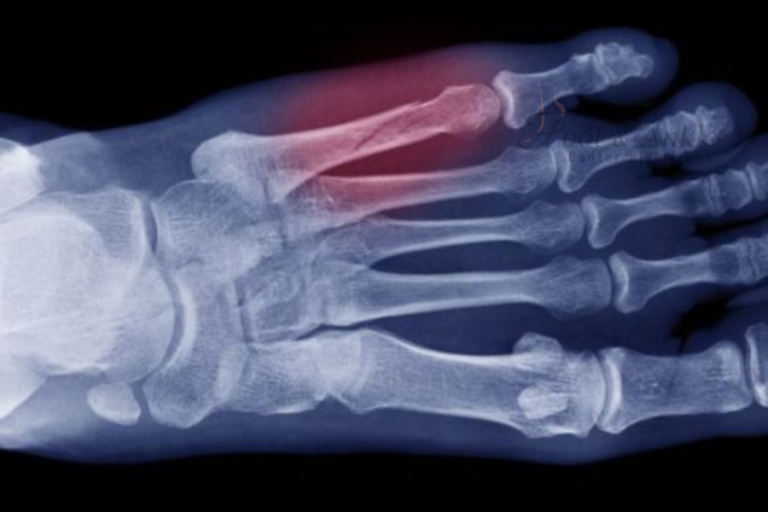If you’ve ever asked yourself, “Why is the bottom of my foot peeling?” you’re not alone. Many people experience peeling skin on their feet, which can be caused by various factors, ranging from dryness to infections. While some cases are harmless, others may indicate an underlying skin condition that requires attention. This article will explore the common causes, treatments, and prevention strategies to keep your feet healthy and smooth.
1. Foot Peeling: Is It Normal?
Peeling skin on the bottom of the foot can be a natural process as old skin sheds and new skin forms. However, excessive or frequent peeling may signal an issue that needs to be addressed. Environmental factors, infections, and skin conditions can contribute to this problem. If you’re wondering, “Why is the bottom of my foot peeling?” it’s essential to identify whether it’s part of the skin’s renewal process or a sign of an underlying concern.
2. Common Causes of Peeling Skin on the Bottom of the Foot
Dry Skin and Lack of Moisture
Dry skin is one of the most common reasons for foot peeling. If your feet are not adequately moisturized, they may become rough, flaky, and prone to peeling. Harsh weather, frequent hot showers, and dehydration can worsen this condition.
Fungal Infections (Athlete’s Foot, Ringworm, etc.)
Fungal infections like athlete’s foot are a leading cause of foot peeling. These infections thrive in warm, damp environments, such as sweaty shoes or public showers. Symptoms often include peeling, redness, itching, and a burning sensation.
Eczema and Psoriasis
Chronic skin conditions like eczema and psoriasis can cause dry, scaly patches on the feet. These conditions often lead to inflammation and peeling skin, sometimes accompanied by itchiness and discomfort.
Excessive Sweating and Hyperhidrosis
People who sweat excessively, a condition known as hyperhidrosis, may experience peeling skin due to prolonged moisture exposure. This can weaken the skin barrier and lead to irritation.
Blisters and Calluses Shedding Skin
When blisters form due to friction or ill-fitting shoes, the skin may peel as the blister heals. Similarly, calluses that build up over time can eventually shed layers of dead skin.
Allergic Reactions to Shoes or Products
Certain materials, dyes, or chemicals in footwear and skincare products can trigger allergic reactions, leading to redness, peeling, and irritation.
Sunburn or Heat Damage
If your feet are exposed to excessive sun, they can suffer from sunburn, which may cause peeling as the skin heals.
3. How to Diagnose the Cause of Peeling Feet
If you’re still wondering, “Why is the bottom of my foot peeling?” observing additional symptoms can help pinpoint the cause:
- If the skin is itchy and red, it may be a fungal infection.
- If there are dry, flaky patches, eczema or psoriasis could be the cause.
- If blisters precede the peeling, it’s likely due to friction or heat exposure.
- If the peeling occurs after wearing new shoes or using a new product, an allergic reaction may be the culprit.
For persistent or severe peeling, consulting a podiatrist is recommended.
4. Home Remedies and Treatments for Peeling Feet
Hydration and Moisturizing Strategies
Applying a thick moisturizer or foot cream daily can help combat dryness and prevent peeling. Look for ingredients like shea butter, urea, or glycerin.
Over-the-Counter Antifungal Creams
If a fungal infection is suspected, antifungal creams or sprays can be used to eliminate the infection. Keeping feet dry and changing socks frequently can also help.
Exfoliation and Foot Scrubs
Gently exfoliating your feet using a pumice stone or foot scrub can remove dead skin buildup and prevent excessive peeling.
Wearing Breathable Shoes and Socks
Choose shoes made from breathable materials and wear moisture-wicking socks to reduce sweat buildup and prevent infections.
Soaking Feet in Apple Cider Vinegar or Epsom Salt
Soaking feet in diluted apple cider vinegar or warm water with Epsom salt can help soothe irritation and reduce peeling caused by fungal infections.
5. When to Seek Medical Help
If home remedies don’t improve your condition or if the peeling is accompanied by pain, swelling, or an unpleasant odor, it’s time to see a doctor. Persistent foot peeling may indicate a more serious issue requiring professional treatment.
6. Prevention Tips to Keep Your Feet Healthy
- Moisturize daily to keep skin hydrated.
- Wear breathable footwear to prevent excess moisture buildup.
- Change socks regularly and opt for moisture-wicking fabrics.
- Avoid walking barefoot in public areas like pools and gyms.
- Use gentle skincare products to prevent allergic reactions.
Conclusion
Peeling skin on the bottom of your foot can result from dryness, fungal infections, or other skin conditions. If you’ve ever asked yourself, “Why is the bottom of my foot peeling?” consider factors like hydration, footwear, and potential infections. By following proper foot care routines and seeking medical help when necessary, you can maintain smooth, healthy feet. If your symptoms persist, consult a podiatrist for a professional diagnosis and treatment plan.




